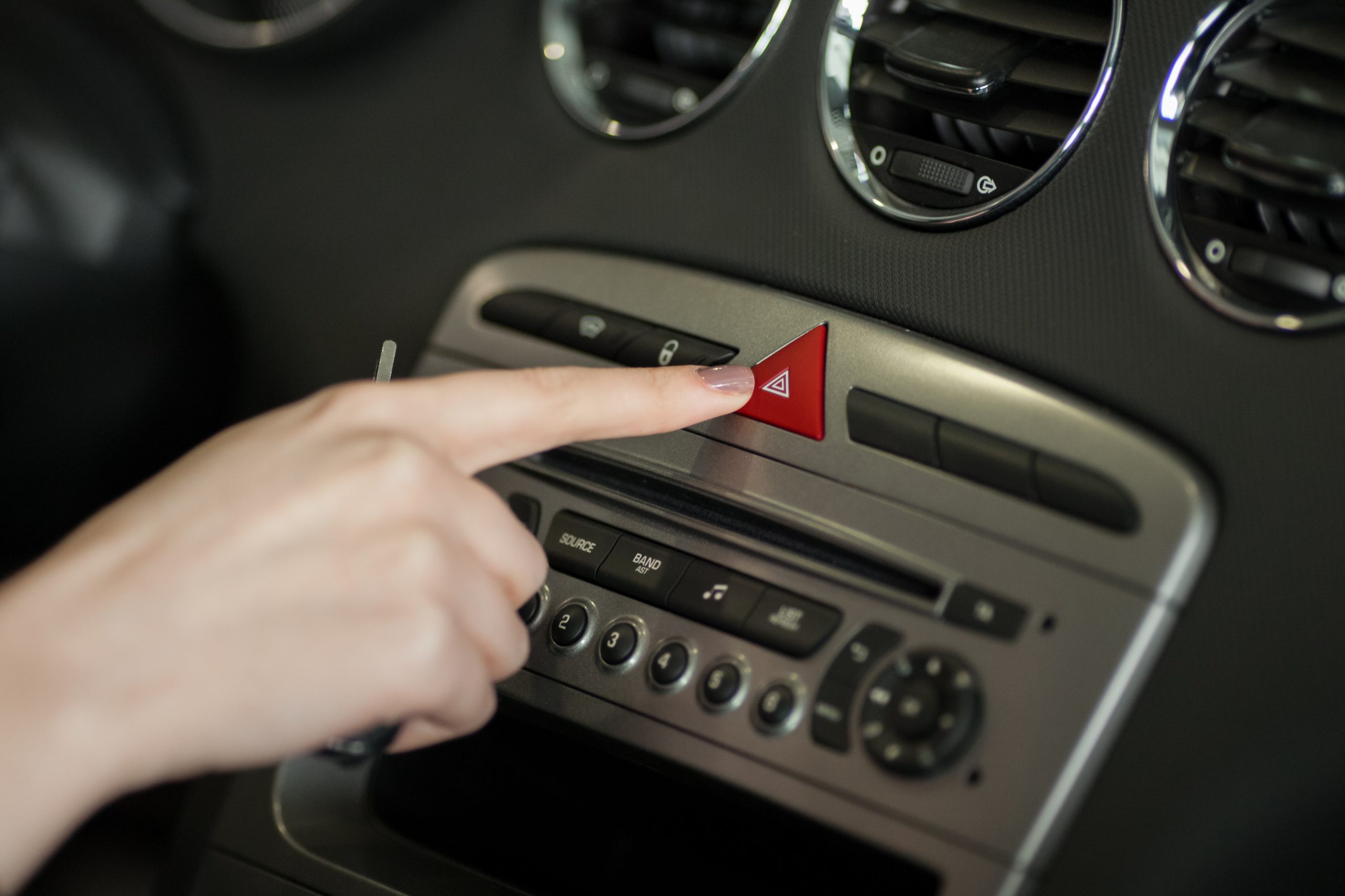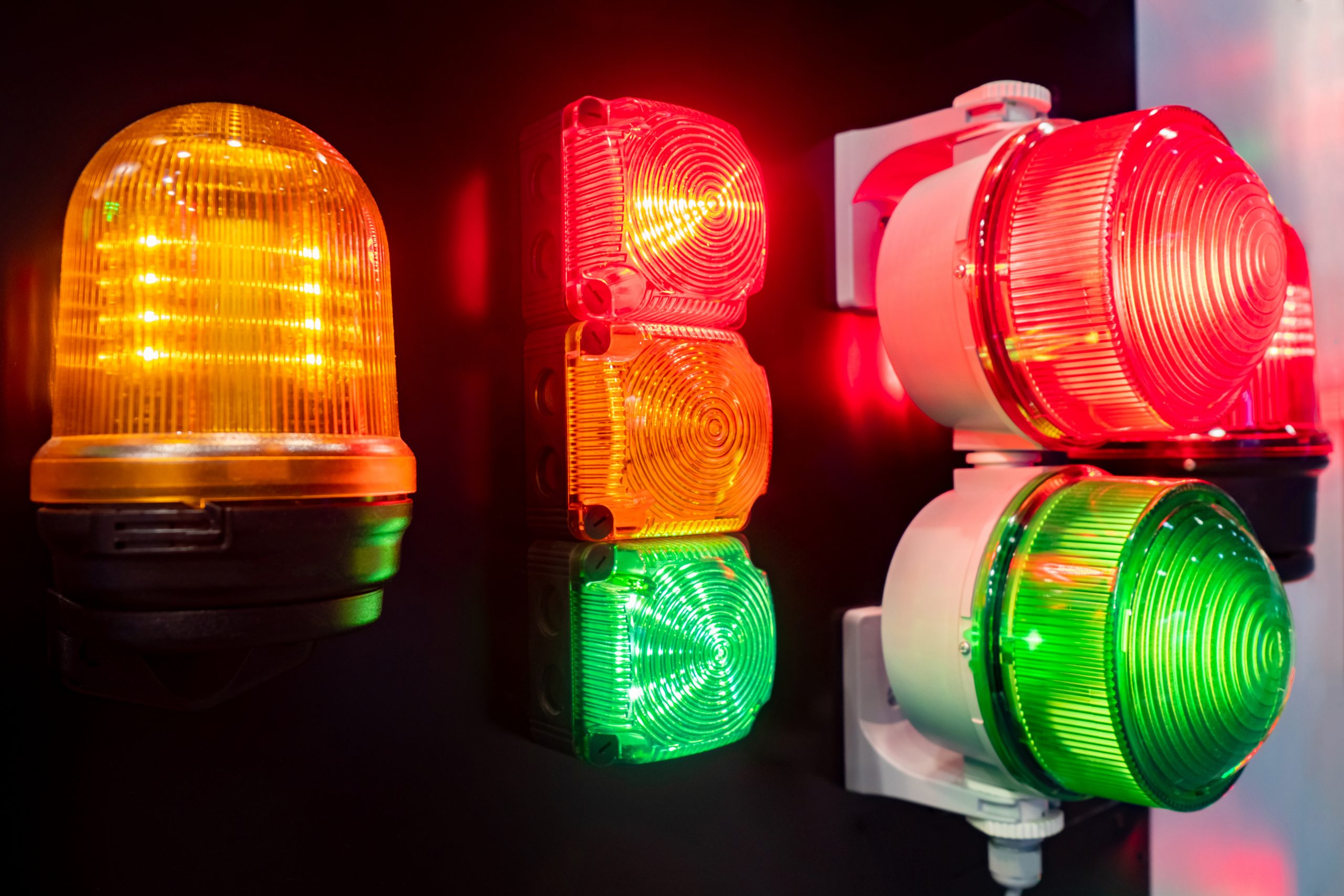Emergency Flasher Lights

Emergency Flasher Lights (Hazard Light)
Every vehicle comes with controls that drivers use each time they get behind the wheel, including the gearshift, turn signals, and more. However, many drivers can go for years without ever using the emergency flasher lights, also known as hazard lights. These lights are intended for only limited situations, and it is important to know how to use this important feature.

The dashboard of a typical vehicle has many different knobs and buttons on it, controlling everything from the radio to the temperature and more. One of these buttons, often set somewhat apart from the others, has a red triangle on it. This is the emergency flasher light or hazard light button. When anyone presses this button, it sends a signal to two red lights at the front and two at the back of the vehicle to start flashing on and off. When these flashing lights are no longer needed, the driver presses the button a second time to deactivate them.
Uses of the Emergency Flasher Lights
As the name implies, emergency flasher lights are intended for situations that involve potential danger. The Wheels.ca website explains that emergency flashers are designed for situations with unexpected hazards. For example, a tire blowout or other loss of tire pressure could force drivers to pull to the side of the road suddenly. An unexpected onset of illness or other issues may be an occasion for using the hazard lights.
If you drive down the street and see a vehicle with its emergency lights flashing, you may be puzzled if it continues along the road with no obvious sign of a problem. Ontario has no specific regulations regarding the use of these lights, and people sometimes turn them on to indicate that they are transporting a large item such as a mattress, or that they are travelling significantly more slowly than the speed limit. In bad weather, the emergency flasher lights can be more visible than regular lights, and drivers may feel the need to use the hazard lights in the wrong situations.
Using hazard lights at the wrong times can be problematic for several reasons. One issue is the message that they send to other drivers. Since these lights are intended for emergencies, other drivers seeing the lights may anticipate a hazard on the road and can be distracted from the task of driving as they search around for the problem.
In addition, hazard lights use the same system as turn signals, and it is thus impossible to use both at the same time. If the driver wishes to make a turn while the hazard lights are on, it will be impossible to signal this intention to other road users. Instead of making the road safer, the emergency flasher lights can make it more dangerous in this case.

When to Use the Emergency Flashers
Although drivers should be careful not to overuse their emergency flashers, they should remember to turn them on when it is appropriate. The Ontario Ministry of Transportation and the Ontario.ca websites mention two of the situations where hazard lights are helpful and can contribute to road safety.
One case is when a vehicle is pulled over to the side of the road to help deal with a situation, whether that is a flat tire or other mechanical breakdown or something as simple as the driver and passenger switching places to give the driver a rest. In cases like these, the driver should turn on the emergency signal as soon as the vehicle is at the side of the road and turn it off before attempting to rejoin traffic.
Another situation that may call for hazard lights is if the headlights suddenly stop working while the vehicle is on the road. If this happens, the driver should immediately try to turn the lights off and on again to see if it was a connection that was somehow jarred loose. If the headlights turn on again, the driver can continue without the emergency lights. However, if the bulbs in the headlights have burned out or another problem has occurred, the driver may need to continue using the emergency lights until the main lights can be repaired.
Although it is best to avoid using the emergency flasher lights unless it is absolutely necessary, the Ontario Rules of the Road website mentions several of the conditions that might allow for their use. In addition to being parked temporarily at the side of the road, drivers might wish to use flashers if they are forced to travel at significantly under the posted speed limit, especially at more than twenty kilometres per hour slower.
A second reason is for increasing visibility in bad weather. In that case, four flashing lights could make the vehicle much easier for other drivers to see. A third reason is to warn other drivers of slow or stationary traffic ahead, possibly because of an accident or other issue.
Stalled Vehicles
Drivers in countries like Canada might have an additional reason for using the emergency flasher lights, especially in areas of the country with cold winters. When temperatures drop below about -30 degrees Celsius, it becomes a familiar sight to see stalled vehicles on the road. Although stalling can happen at any time of the year, winter is the most common.
Often, this situation happens at red lights or other times when the vehicle stops for more than a few seconds. If drivers cannot restart their stalled vehicles within the first minute or two, it is a good idea to activate the hazard lights to alert other drivers to the situation. If possible, the driver should try to get the vehicle to the side of the road, but this is not always feasible. Emergency flasher lights can alert other drivers that they need to move to a different lane to get past the stalled vehicle.
Although emergency flasher lights are not generally a daily necessity, it is important for everyone to know how to use these important safety features. When they are used properly, these lights can be a useful means of communication on the road.
